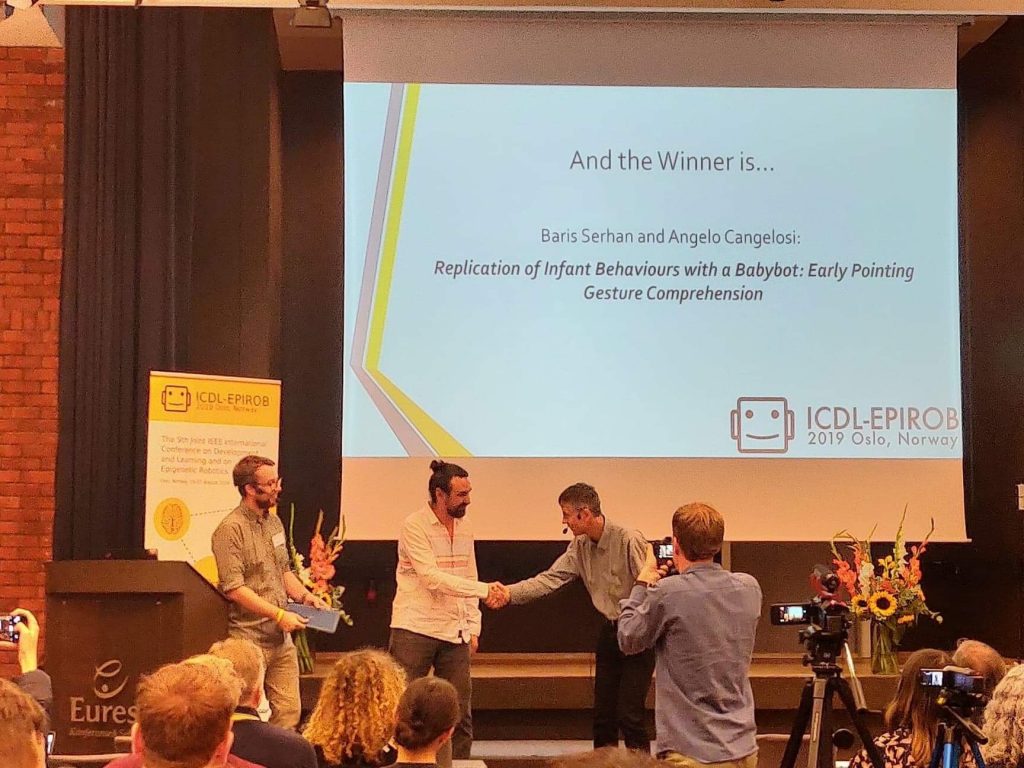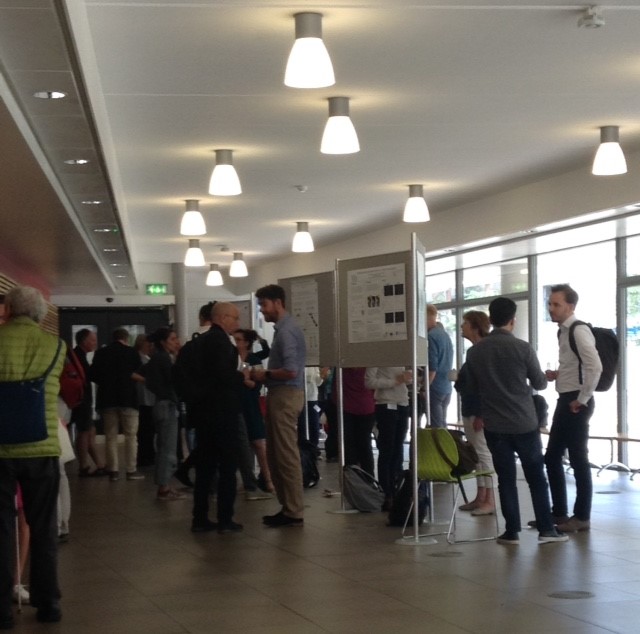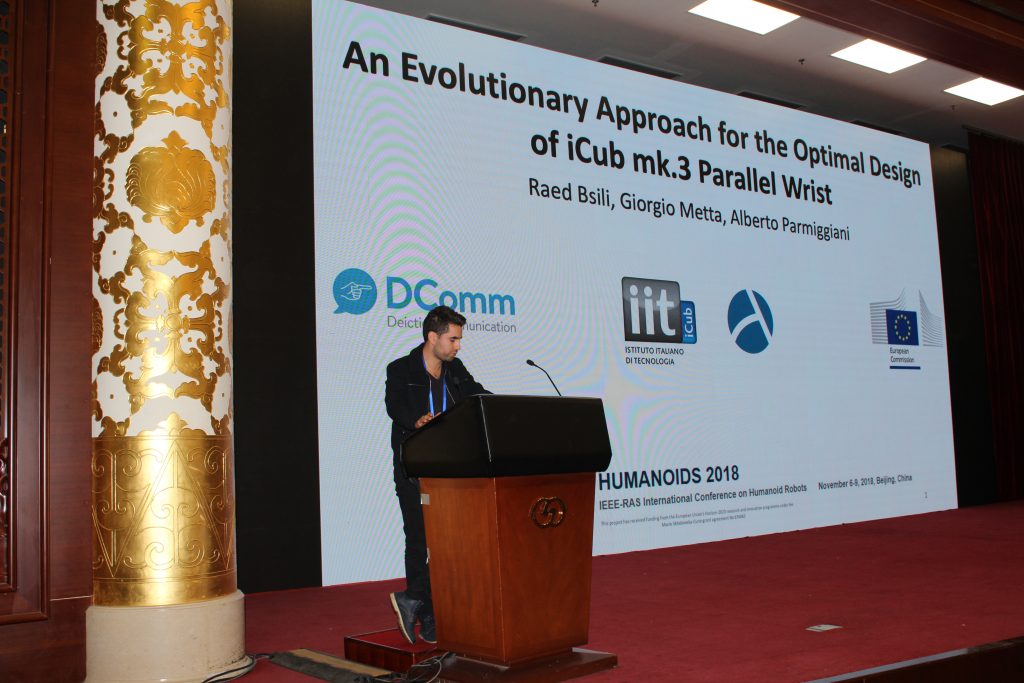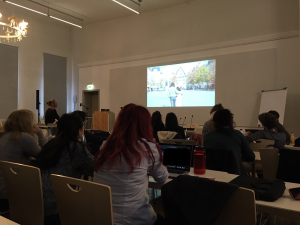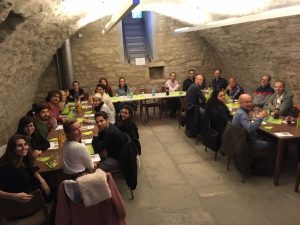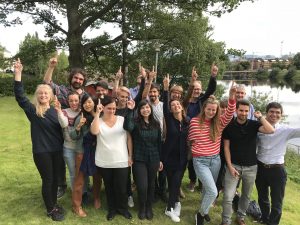The nominees for the MODELBot award (MOdelling DEvelopment and Learning with robots and computers) were selected among the papers submitted to the MODELBot challenge. These are papers that establish a strong link between developmental studies on the one hand and robotic and /or computational modeling on the other hand. The papers were presented in a common session at the IEEE ICDL-EpiRobb 2019 Conference and the winner decided by audience vote, based on which paper best fulfills the requirements of the MODELBot challenge.
Congratulations to Baris Serhan and Angelo Cangelosi, Authors of the paper ‘Replication of Infant Behaviours with a Babybot: Early Pointing Gesture Comprehension’, who were delighted to win the Award and pictured is ESR Baris Serhan:
